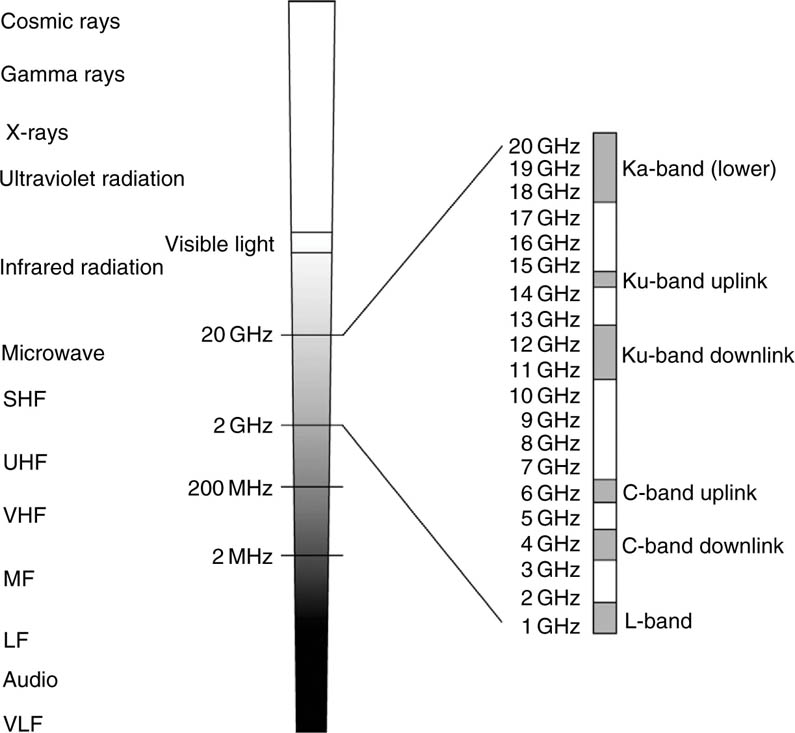Satellite regulatory issues
Regulation
Operating SNG uplinks virtually anywhere in the world requires some degree of administrative process to be undertaken, and any operation has to take place within the international prescribed limits of spectrum. These individual national administrative procedures are used to regulate SNG uplinks both in terms of political and technical controls. The constant push to provide the latest news is the driver behind allowing SNG greater freedom, particularly into places where it is not wanted and even viewed with mistrust and fear. Broadcasting and telecommunications are matters of national security and social policy in many countries, and in some countries, the concept of foreign newsgatherers bringing in their own transmitting equipment is an issue of sovereignty.
To operate an SNG uplink system anywhere in the world, there are normally three areas of administration that have to be covered:
(1) Permission has to be granted to the uplink operator, on either a temporary or permanent basis, to operate the uplink in the country and area where it is to be operated.
(2) The SNG uplink operator has to obtain authority, usually by way of registration, with satellite system operators who may be providing the space segment to be used, to access that space segment with the uplink equipment.
(3) Space segment has to be secured by way of a satellite transponder/channel booking.
To fully appreciate the administrative context within which SNG operates, we need to briefly look at the regulatory aspects of spectrum. There are a bewildering number of organizations and bodies involved in the setting of standards, regulation and administration of the spectrum. Amongst all of this, we need to understand where the process of SNG overlaps with international and national regulation.
Spectrum
There is a constant pressure for the resources of bandwidth and power by telecommunications services providers seeking to deliver data, telephony and video services, particularly in the frequency spectrum used for satellite communications. The desire to deliver more services to more people has never been greater nor technologically more feasible, and to meet this pressure there is a need to be ever more efficient in the allocation and use of spectrum.
The known electromagnetic spectrum ranges from nothing to gamma radiation, with visible light just over half way up the spectrum.
Electromagnetic spectrum can be viewed as a natural element, such as water or air, but only available in a relatively controlled amount to be useful. It can be imagined that without international agreement and regulation of usage there would be chaos. Each country could use whatever spectrum and transmitter power level they pleased, but as a natural resource and no respecter of man’s political boundaries, the airwaves would be crowded with transmissions interfering with each other. Anyone who has tried to listen to short-wave or medium-wave radio at night will hear this type of interference as atmospheric conditions alter at night to ‘throw’ the signals further afield. There is also a significant amount of interference from space affecting many parts of the frequency spectrum.
Commercial satellite frequency bands of interest for SNG are shown expanded

The international regulation of the spectrum in fact deals with ‘normal’ conditions, and cannot fully take account of random atmospheric effects caused by the onset of night or abnormal weather conditions, which can particularly affect the lower end of the spectrum as used for most radio transmissions.
There are a number of regional and global standards-setting organizations, which are linked either directly or voluntarily. There is, however, a single global body that oversees all aspects of the use of spectrum – the ITU – which encompasses all administration of spectrum.
ITU (International Telecommunications Union)
The ITU is concerned with international co-operation in the use of telecommunications and the RF spectrum, and with promoting and facilitating the development, expansion and operation of telecommunications networks in developing countries. It is the leading world body for the co-ordination and development of technical and operating standards for telecommunications and radiocommunications (including satellite) services.
The ITU is an intergovernmental organization (IGO), within which public and private sectors co-operate for the development of all telecommunications for the common good. It creates and defines through agreement international regulations and treaties governing all terrestrial and space uses of the frequency spectrum as well as the use of the geostationary satellite orbit. Within this framework, countries adopt their national telecommunications legislation. However, it is important to realize that the ITU does not have the power to impose regulations – it is not a supra-national power – and its strength is through agreement between member countries.
As well as administering frequency allocations for satellite use, the ITU also acts as the global co-ordinating body for the allocation of orbital slot positions for satellites. The ITU allocates sectors of the geostationary arc nominally to countries in the region below each arc sector.
